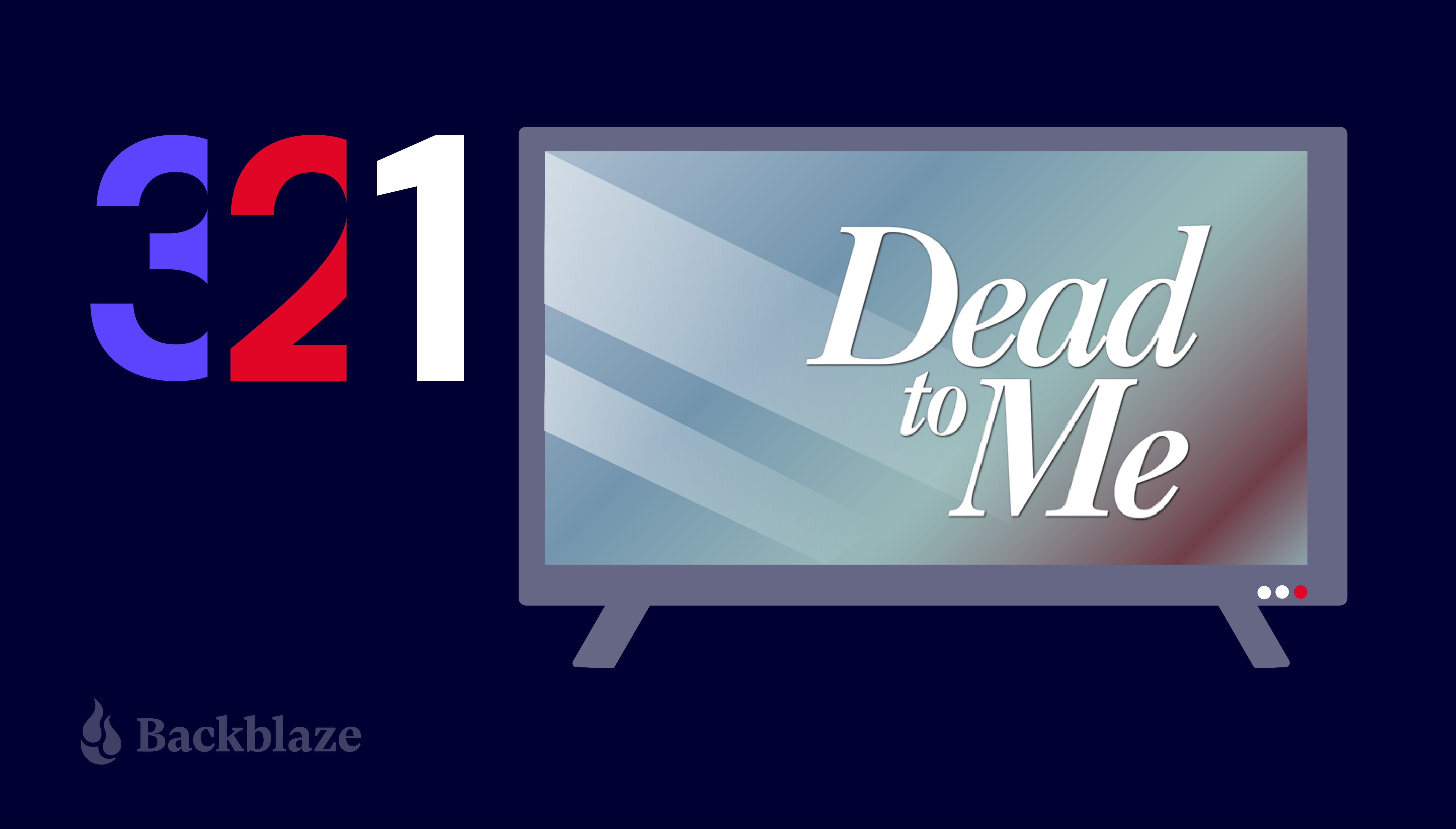
When you start thinking about backup strategies, it tends to get inside your head. Like Dustin Hoffman’s character in “Rain Man”, seeing equations float around him as he calculates his odds in Vegas, the mental exercise of ensuring your backups have backups of their own tends to manifest itself in the strangest places.
Take, for example, the finale of the Netflix show “Dead to Me” starring Christina Applegate and Linda Cardellini. The show wrapped up a few months back and should definitely be moving toward the top of your “I’ve been meaning to watch that” list. And if you have already seen it, I can’t stress enough how much more you pick up on a second time around.
Anyway, to a certain segment of the audience, the climax of the show served as a fitting conclusion to a whole host of storyline threads whose dense weave kept viewers enthralled from the first episode to the last. But to those of us who tend to worry about things like a proper 3-2-1- backup strategy, the final few episodes concealed a subtle message about the importance of proper data backup procedures.
Let’s dig into what “Dead to Me” can teach us about the importance of a good backup strategy.
Defining a 3-2-1 Backup Strategy
As we’ve discussed at length before, a good 3-2-1- backup strategy involves three copies of your data:
- One: On-site storage on your home device. Your phone, your laptop, your tablet, whatever. If you can physically touch it and your files are in there somewhere, that’s your first copy.
- Two: On-site storage on a separate device. This can be an external hard drive, a thumb drive, or if you’re on a Mac, Time Machine. If it’s not physically in the device, but it’s still somewhere close by, that’s your second copy.
- Three: Off-site backup. This should automatically scan the files on your device and upload copies to the cloud for safe-keeping. (Pssst, we’re partial to Backblaze’s astonishingly simple cloud back up here).
Okay, So What Does That Have to Do With “Dead to Me”?
There’s kind of a long road ahead, so buckle up.
For those of you who haven’t seen it, or who binged it so long ago you need a refresher, “Dead to Me” follows the story of two friends, Jen (Applegate) and Judy (Cardellini). Jen is a recently widowed mom whose husband Ted had been killed in a hit and run shortly before the show started. Judy is a woman she meets during a group therapy session, who claims to have lost her husband as well.
Only, as it turns out, Judy didn’t lose her husband. They just split up—after an argument that started when they accidentally struck and killed Jen’s husband.
Intrigued yet? We’re only on the first episode.
By the end of the first season, Jen has discovered the truth about Judy (but they’re still friends), Judy is dating a police officer who is investigating the crime she committed, and her ex-husband Steve (James Marsden, playing against his usual type as a jerk) is desperately trying to cover up the crime while avoiding the Greek mafia, who have a contract out on him.
We cannot stress enough that all of this craziness happens in the first season, which ends with Jen accidentally murdering Steve by—of course—cracking him in the head with a wooden bird, which winds up as a critical plot point.

From there the plot twists around on itself, throwing every curveball imaginable at you from secret twin brothers to money laundering schemes to torrid affairs (and hey, we already mentioned the Greek mafia). But critical to our point is one plot thread that could have been avoided with a proper backup strategy.
Karen and the… Let’s Call It 2-1 Strategy
A minor character in the first few seasons, Karen is a neighbor of Jen’s who… well, can be kind of a Karen. You know that person in your neighborhood that you suspect reports you to the Homeowner’s Association whenever your grass gets a little too long? That’s her.
As the neighborhood Karen, she has a natural inclination to keep an eye on things. As such, her house is ringed by security cameras. And as we learned in the season two premiere, one of those cameras just happened to spy Steve on his way to Jen’s house the night he was murdered.
Plot twist, right?
Since this is a huge piece of evidence implicating them in the murder they’re actively covering up, Jen and Judy have to ensure that the incriminating footage is destroyed forever. That means deleting the footage, which they discover has been safely stored in the cloud. They first try to convince Jeff, Karen’s ex, to log on and do it (side note: this happens after they discovered he was having an affair with one of Judy’s ex-boyfriends, because this show is bonkers) but unfortunately Karen has changed the password to her cloud storage.
So they have to sweet-talk their way into Karen’s house (greasing the wheels with her favorite dish—Mexican lasagna with extra raisins) and get her to delete the footage off the cloud. It’s a wonderful moment of female camaraderie as they convince Karen that the data on the cloud represents too many painful memories of her time with her ex. And when Karen finally drags the folder to the trash, we cheer her for finding the strength to move on.

And then, the punchline.
“And if I ever want to see it again, I have it backed up on my hard drive,” she exclaims, holding up her external drive backup. Jen and Judy manage to steal that, and in doing so get away with their crime scot-free.
What Should Karen Have Done?
Look, we get that the show is trying to get us to root for Jen and Judy as our protagonists, but to be honest, murder is one of those things that is a little hard to look past.
Especially given that the FBI was looking into the crime at that point in the show, what Karen did could legally be considered obstruction of justice. Or at least unintended obstruction of justice, which we’re pretty sure is still a crime. (We on the blog team are definitely not lawyers, though.)
Had Karen utilized a proper 3-2-1 strategy, she should have had a third copy—the one on her local drive—even after she was tricked into deleting it from the cloud and handing over her external drive. And, if she was using Backblaze, she would have been able to access an earlier version of her backup with either our standard 30-day version history or Extended Version History. So, she could have pulled a copy even after she deleted it.
The Moral of the Story Is: 3-2-1 Backups Are Still the Best
Karen handed over all the incriminating evidence about the murder to the person who committed it. Which, true, made for a happy ending as far as the show is concerned. But for those of us who can’t seem to get 3-2-1 backup strategies out of our head, she committed a serious blunder. A 2-1 backup strategy just won’t cut it.
And that, folks, is how “Dead to Me” reminds us all once again that a 3-2-1 backup strategy is still the best way to keep your data safe and out of the hands of nefarious, if endearing, murderers.




